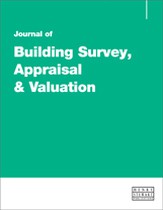Moulds and health implications: Building risk assessment in a litigious age
Abstract
Mould growth in buildings, archives, museums, galleries and our cultural heritage can have detrimental effects on collections, decorative surfaces, materials and contents and can pose a threat to the health of the occupants. This paper is about interrelationships of the internal building environment created by the interactions of building architecture, materials, structures, services, contents and collections with their external environments and the resulting infestation and mould. Mould problems in both modern and historic buildings are mainly the result of defects in buildings, lack of maintenance and gross neglect. Rectifying these defects and ensuring proper maintenance can provide long-term sustainable, holistic solutions to these problems. The author has advocated that correct identification of the mould infestation by an independent scientist is the vital key to all such problems, as all infestation is not equally toxic, pathogenic and destructive. The environmental approach is beneficial to the building fabric, occupants and the wider environment, and the ongoing monitoring of the environmental conditions in buildings ensures the long-term health of building materials, health of the occupants and structures. The author strongly believes — based on scientific, practical experience and successful case studies over the last 33 years — that much damage has been inflicted in the last century by dealing with the symptoms of the problems and not with the cause(s). By proper understanding of the causes, their repetition should be avoided.
The full article is available to subscribers to the journal.
Author's Biography
Jagjit Singh PhD is a building mycologist and pathologist and a director of Environmental Building Solutions Ltd (EBS). He specialises in building health problems, heritage conservation and environmental issues and has more than 33 years’ hands-on experience in surveying historic buildings. Jagjit has carried out environmental surveys for dry rot, wet rot, moisture, damp and decay, moulds, environmental health surveys and monitoring historic buildings, and provided recommendations for environmental control. EBS’s reputation in non-intrusive investigations for dry rot, wet rot, timber decay, damp, hazardous materials surveys, heritage building investigations and the development of innovative techniques — including recommendations for environmental management sympathetic to the building fabric finishes and components and the non-use of chemicals and cementitious tanking materials — is well respected by conservation and heritage authorities. Jagjit has published in excess of 250 technical papers and communications, contributed to books and lectured widely on care and conservation of collections, building pathology and building health problems, covering wide areas including fungal infestation and environmental control, timber decay in buildings, damp and decay in buildings and drying out buildings after fire and water damage, environmental monitoring and control of moisture, mould and biological contaminants, Indoor air quality and health implications in buildings. Jagjit has edited several books including Building Mycology: Management of Decay and Health in Buildings, Environmental Preservation of Timber in Buildings, Allergy Problems in Buildings and Environmental Monitoring of our Cultural Heritage and Sustainable Conservation Solutions. Jagjit is a BBC expert and has appeared twice in the Raising the Roof series. He is a former president of the International Society for the Built Environment (ISBE).
Citation
Singh, Jagjit (2021, December 1). Moulds and health implications: Building risk assessment in a litigious age. In the Journal of Building Survey, Appraisal & Valuation, Volume 9, Issue 3. https://doi.org/10.69554/VHAO2744.Publications LLP
